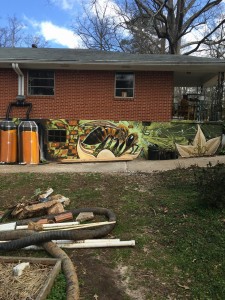Summary of “Recognizing Campus Landscapes as Learning Spaces By: Kathleen G. Scholl & Gowri Betrabet Gulwadi
In this article, Kathleen Scholl & Gwori Gulwadi opens the discussion around 20.4 million students attending colleges and universities and how the number continues to grow. This growing student population challenges university to reframe their teaching methods and campus environments of today’s college population. The experimenters propose that “colleges and universities should utilize their natural landscape as a learning resource for students” (Scholl and Gulwadi 1).
As the article continues, Scholl and Gulwadi examine the historical background of college campuses. Many of America’s colleges and universities are located in rural areas due to their origination being centered around creating a seclude place apart from city life, in addition; the land act of 1862 required labs and scientific research buildings to be built. This innovation created the optimum learning environment. An early land space designer, Fredrick Olmstead stated ““natural scenery employs the mind without fatigue and yet exercises it; tranquilizes it and yet enlivens it” (Scholl and Gulwadi 54). The amount of land is still significant to college and universities today. As institutions continue to evolve and campus landscapes become more urbanized, the appeal of greenery will continue to pose importance to colleges overall learning environment.
Scholl and Gulwadi evaluate the definition of landscape better understand its place in the campus setting. In the article nature is defined as ““physical features and processes of nonhuman origin that people ordinarily can perceive… together with still and running water, qualities of air and weather, and the landscapes that comprise these and show the influences of geological processes” (Scholl and Gulwadi 55). This definition allows for the campus environments to provide the perspective of viewing campus settings as part of the environment. By this perspective being taken into consideration, the most inclusive and eco-friendly landscape can be achieved for students attending colleges or universities. The researchers have noted that many times students experience loss in cognitive functions such as concentration and focus, impulse, inhabitation and also memory due to fatigue and overuse (Hartig, et al., 2014; Kaplan & Kaplan, 1989). When colleges and universities provide green spaces on their campus, these ailments that plague most college students and can alleviated simply by being surrounded in a natural learning space. Consequently, students who have a nature setting on their campus experience less stress and hostility. A campus that caters to depleting the cognitive aliments of students being stressed and overwork through a natural environment, will then create an institution of well rounded students.
The traditional setting of a college campus has been created learning environments that are no longer concussive to the new age students who attend those institutions. As the technology advances and colleges and universities continue to expand; the addition of natural landscapes or green spaces can provide the students with benefits of being at a high institution of learning but also providing a natural environment to be in touch with mother nature. Scholl and Gulwadi conclusion reinforced the idea that natural green spaces environment is beneficial to student learning.
Scholl, Kathleen G., and Gowri Betrabet Gulwadi. “Recognizing Campus Landscapes as Learning Spaces.” Journal of Learning Spaces 4, no. 1 (July 8, 2015). http://libjournal.uncg.edu/jls/article/view/972.







